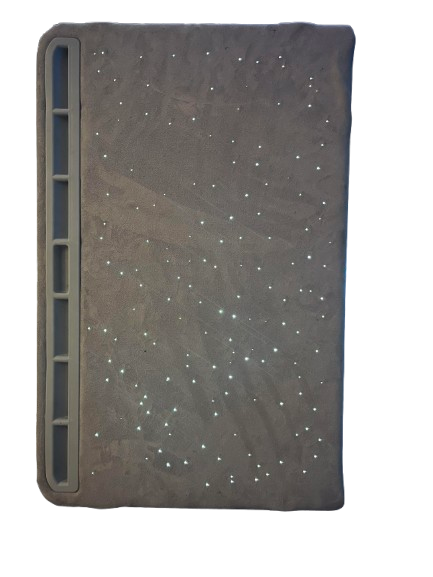Overview of Sunroof Types
Sunroofs come in various types and mechanisms, each with its own characteristics and installation considerations. Understanding these differences is essential for successful modifications, such as adding starlights or reupholstering. This guide will provide an overview of the common sunroof types and their features.
🌤️ Sunroof Shade Types Matter
Sunroofs may be manual or motorized and can utilize different shade mechanisms:
- Sliding Rigid Shades: Usually removable and can be upholstered or drilled for fiber optics.
- Rolling Accordion Shades: Typically cassette-mounted, motorized, and non-modifiable.
- Modular or Dual-Panel Rigid Shades: Found in vehicles like the BMW X5, Jeep Grand Cherokee, or some Subarus, where two separate rigid panels slide front to back with partial removal access.
🚘 By Platform / Region
Different vehicle platforms have unique sunroof designs:
- German Cars (e.g., BMW, Audi, Mercedes-Benz, VW): Typically feature motorized panoramic glass sunroofs with tightly integrated rolling shades or rigid cassette panels. For example, the W223 S-Class and BMW G20/G30 use rolling accordion-style cassettes that are not modifiable. The BMW X5/X6 may have dual rigid shades, allowing for removable panels for the front and fixed rear sections. Accessing the motorized panel cassette often requires full disassembly.
- Japanese Cars (e.g., Honda, Toyota, Nissan, Mazda, Subaru): Generally more installer-friendly, these vehicles often have manual or semi-motorized removable rigid sliding panels. For instance, the 2008 Acura TSX features a hand-slide shade that can be easily removed. Subaru Outback models may have dual rigid panels in premium trims, typically held by clips, tabs, or plastic guides with fewer sensors involved.
- American Cars (e.g., Chevy, Ford, Dodge/Chrysler): These vehicles exhibit a mix of sunroof designs across trims. The Dodge Charger and Chrysler 300 have removable sliding panels, while the Ford Explorer and Edge feature rolling cassette-style panels that require glass removal for access. Aftermarket-friendly options are available, except in panoramic or high-trim models.
- Korean Cars (e.g., Hyundai, Kia, Genesis): Often mimic German designs, such as the 2023 Hyundai Elantra, which has a tight-fit sliding panel. Motorized shades with a rolling design are common in Genesis G70/G80 and upper trims.
🧵 Modifying Considerations
When considering modifications, keep the following in mind:
- Sliding Panels: These are easy to remove, reupholster, or drill for fiber optics.
- Rolling Accordion Shades: These are not modifiable; you will need to route a separate fiber optic line or leave them unlit.
- Dual Rigid Modular Shades: Some allow for separate removal of front and rear sections, requiring independent routing of fiber bundles to each zone. This is common in BMW SUVs and the Jeep Grand Cherokee. If the shade is motorized, disassembly may trigger DTCs if not reconnected properly.
🔧 Install & Customization Notes
Here are some important notes for installation and customization:
- Always test the movement of the panel before starting removal to ensure functionality.
- Look for Torx or Phillips screws in the track system that may need to be removed.
- Some shades require the glass panel to be removed for access, so be prepared for that step.
- Sliding shades can be upholstered or drilled for stars, while rolling shades require workarounds, such as bypassing the shade with a separate star line and projector.

